
Remodeling your bathroom can add significant value to your home. Your bathroom remodel cost in Columbus, OH will depend on size, fixtures, materials, labor, and other factors.
A builder-grade kitchen gets a modern makeover


When Caroline Gilbert, director of content and editorial at Angi, moved into her San Diego house, the kitchen had seen better days. “It was clearly just builder grade quality,” says Gilbert. “It hadn't been touched or upgraded probably since the ‘90s when the house was still a rental property.”
Gilbert and her family knew that a kitchen remodel was inevitable, but they decided not to rush into anything. “We wanted to spend time in our house and not immediately remodel when moving in,” she says. “We didn't know how we were going to interact with our kitchen or how it was going to flow.”
After seven years of living in the space, they hired a contractor for the remodel. The extra time helped them define what they liked about the kitchen—namely the size and layout—and what they wanted to change. In the end, Gilbert’s kitchen was transformed into a modern, neutral room with easy-to-clean countertops, textured tiles, and a brand-new induction stove.
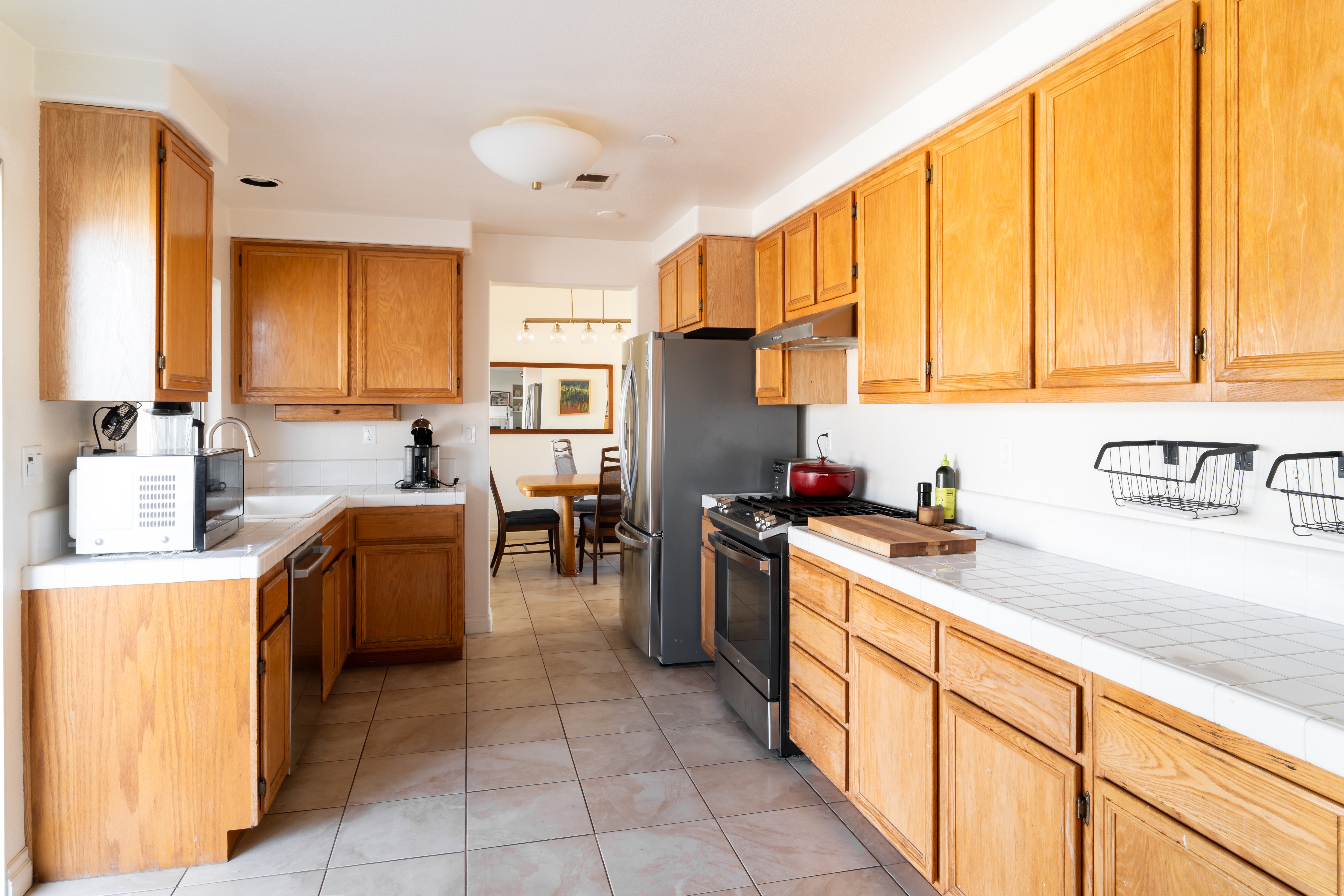
When planning her new kitchen, Gilbert was most eager to change the countertops. She says the tiled surfaces were “impossible to clean” because food kept getting caught in the grout. “Within the first two years of living in our house, I gave up on trying to keep the grout clean. I was just cleaning the surface of the tile,” she says.
Gilbert also wanted to swap her stainless gas range for an induction stove—and again, easy cleaning was at the top of her mind. “Gas ranges get so nasty, and then you have the heavy grates you have to pull out and scrub with steel wool. It’s a whole ordeal,” she says. Induction cooktops have a glass top that can be wiped clean with no additional scrubbing.
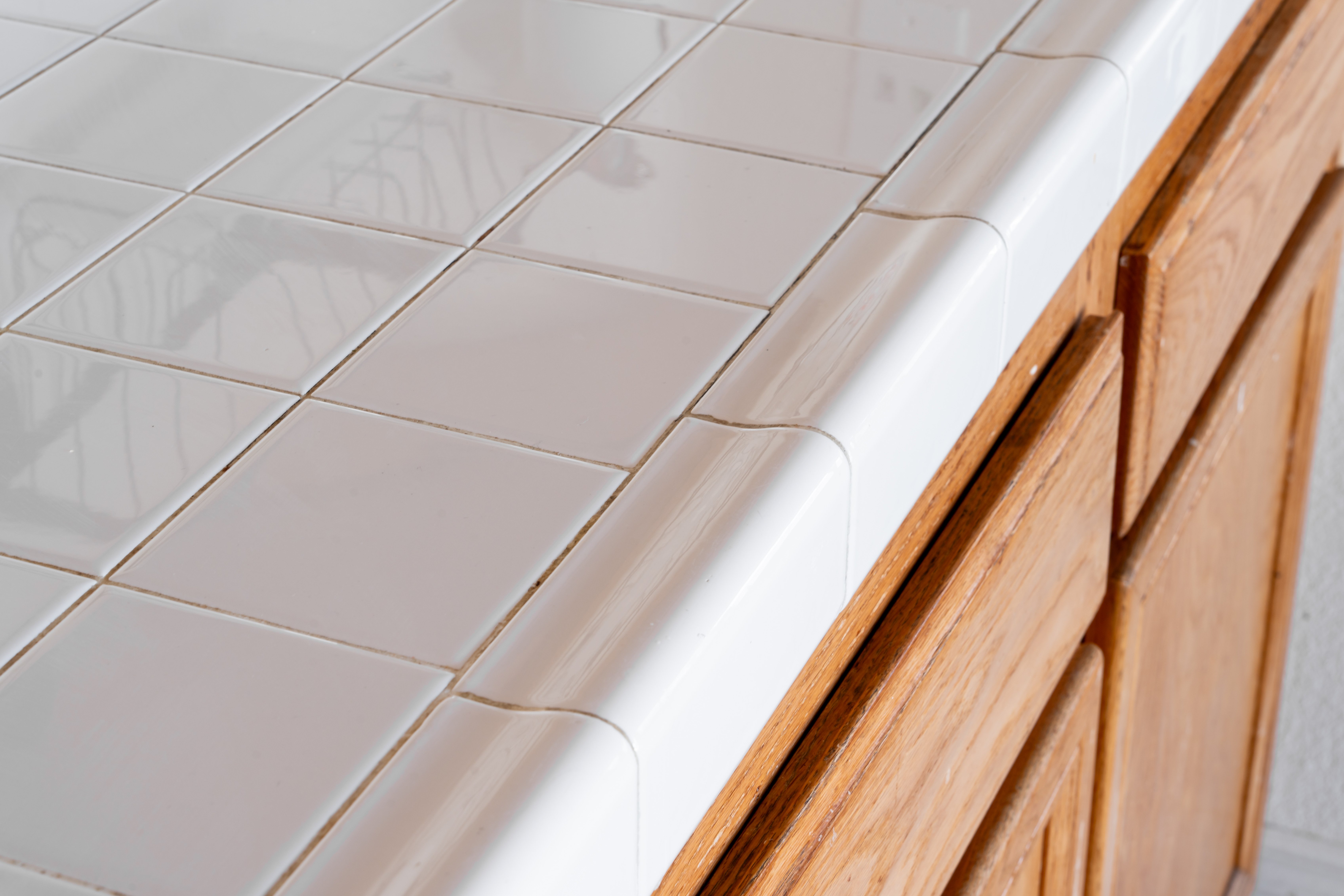
Despite some major changes, the kitchen remodel wasn’t a total gut job. That’s partly because Gilbert wanted to keep the general layout of the room. “Once you start moving around placement of appliances, especially plumbing and electrical, the cost tends to get higher. There wasn't anything that really bothered us about the general layout of the kitchen that warranted the extra cost,” she says.
The flooring, which matches the rest of the first floor in Gilbert’s open concept house, also didn’t change. Neither did the refrigerator and dishwasher, which Gilbert’s family bought upon moving into their house seven years ago.
Though Gilbert decided on the kitchen remodel last January, she didn’t start sourcing contractors until August, and work started the next February. This timeline gave her several months for planning and inspiration.
Gilbert scoured Pinterest and Instagram, and she also reached out to an online interior designer to narrow down her vision. Ultimately, she opted for a modern, neutral kitchen with interesting colors and textures—“and also warmer tones because we live in Southern California,” she adds.
As another part of the planning process, Gilbert purchased materials for the kitchen, including tiles, appliances, countertops, etc. “Some of these things are big shipments that can take two, four, six weeks to arrive at your house. If those things aren’t on your job site at the time of the project starting, you can delay your project,” she says.

The contractor working on the project, Julian Barak at Vesta Builders, adhered to Gilbert’s initial vision, but he also brought new ideas to the table. This was actually one of the reasons Caroline went with Vesta Builders, along with their good reviews and existing portfolio of quality work.
“From the initial consultation, we tried to provide as much value as possible,” says Barak. “For example, she said she wanted a durable and easy-to-clean countertop, so the first thing that we suggested was quartz.” Vesta Builders then suggested different quartz options and helped Gilbert find a vendor, who provided two big slabs for the countertops.

The kitchen remodel started in February and took about six weeks. This was on the shorter end, as Barak says kitchen remodels generally take six to eight weeks. The work included demolition, framing, plumbing, electrical, drywall, painting, cabinet installation, and finishing, along with several inspections along the way.
Vesta Builders was communicative about their timeline. They had a digital project management portal where Gilbert could check the daily schedule, see the scope of the work, and view payment information, according to Barak.
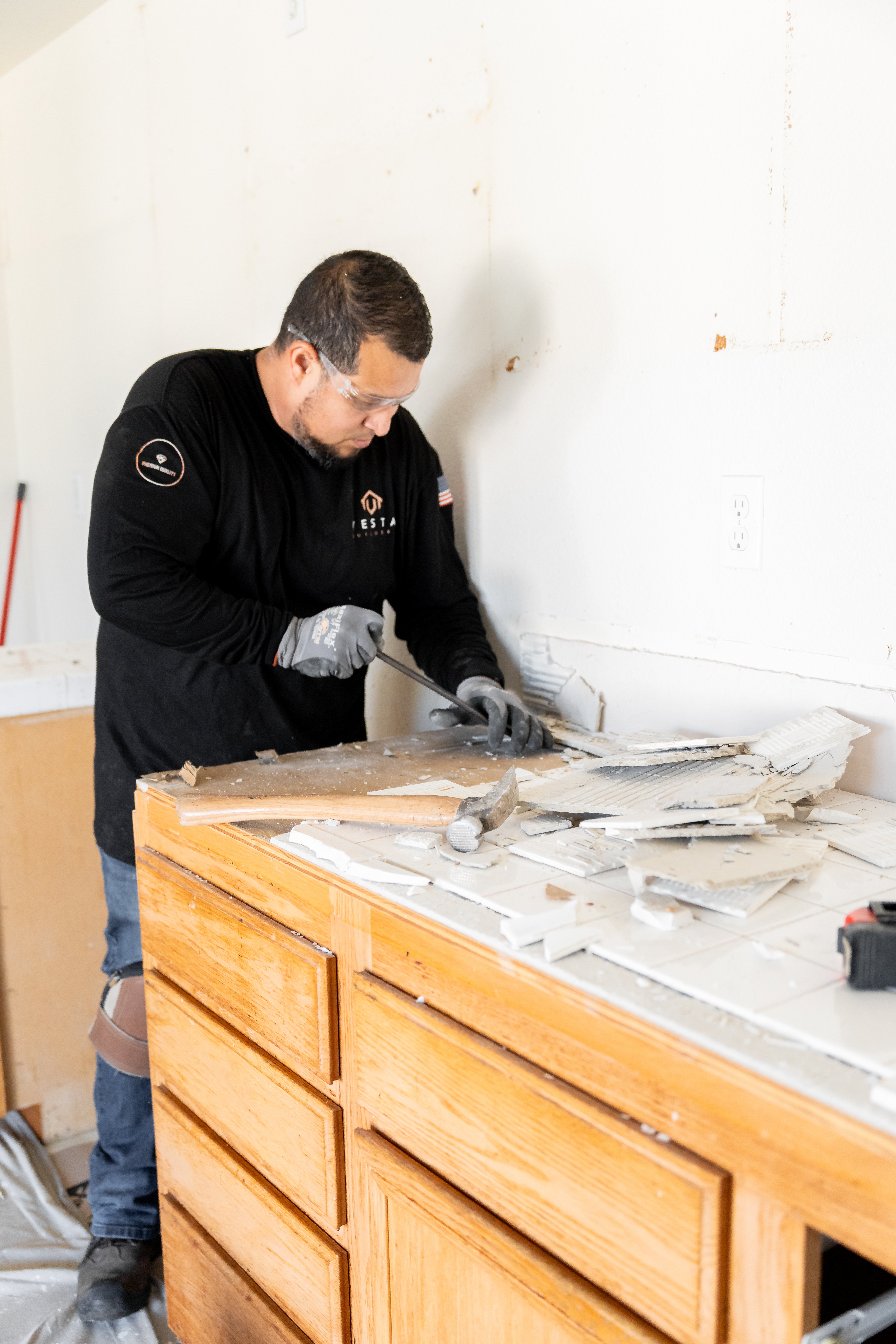
Of course, almost no remodeling project goes without a hitch, and Gilbert faced some minor setbacks. One involved upgrading the electrical panel to power the induction stove. “Even though we had an electrical hook-up in our kitchen, it wasn't a high enough voltage to power induction,” she says.
Gilbert had discussions with Vesta Builders about the possibility of involving the local energy company for extensive electrical work, which might’ve required trenching and digging. Thankfully it wasn’t required in the end because of a solution offered by Barak.
“We got an electrician on site to upgrade our panel without any issues,” Gilbert says, adding that a nice thing about upgrading your electrical panel is that it increases home value.
Another struggle was simply living in a construction zone for several months. “We were able to move our fridge into our dining room so we could keep it on, but we had to use a combination of slow cookers and air fryers to make most of our meals,” Gilbert says. When your kitchen is being remodeled, “you feel like you're on top of each other and not enjoying meal time for two months.”
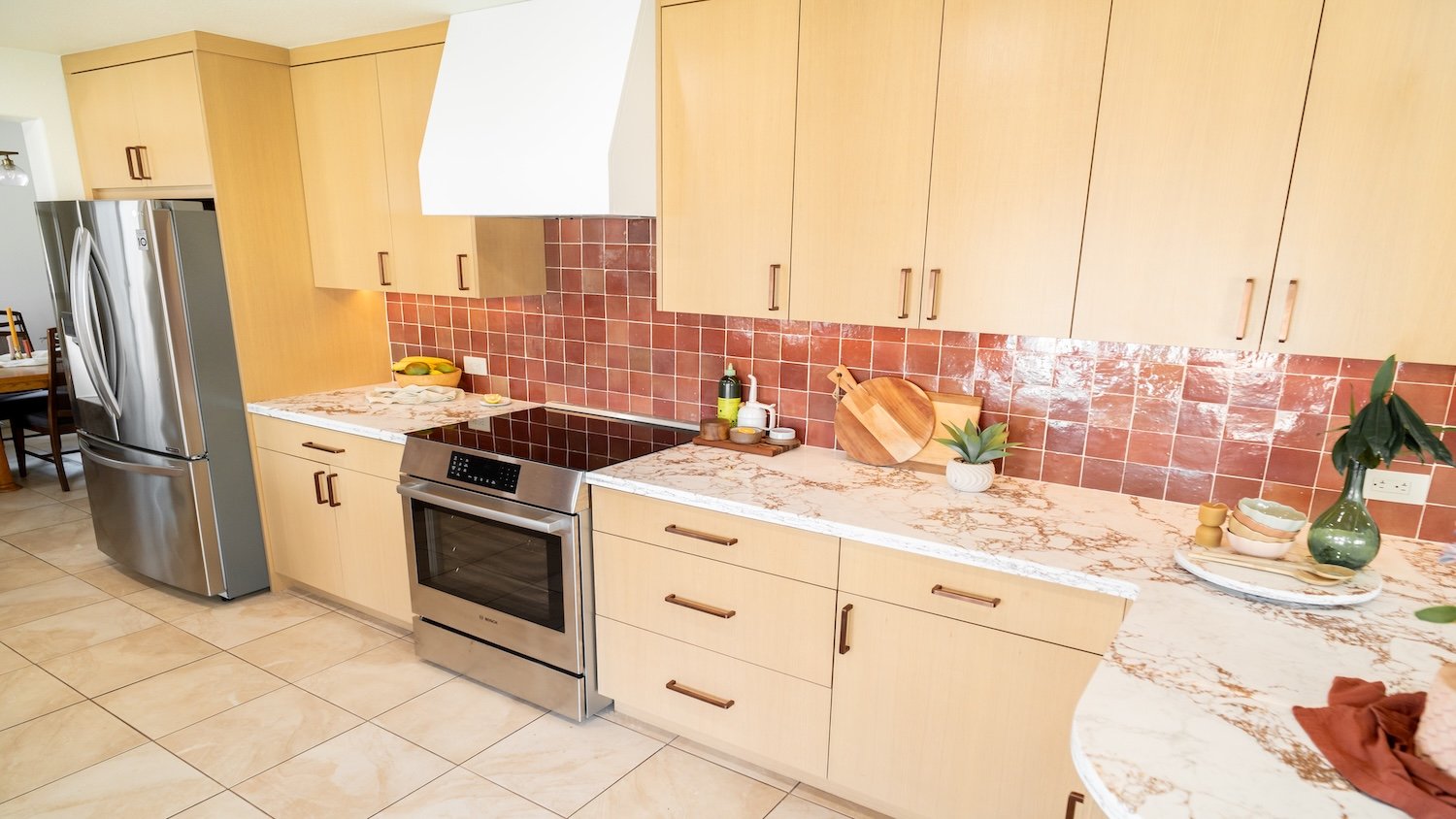
Though Gilbert’s kitchen maintained its layout and size, the before-and-after is striking. Her favorite components are the countertops and backsplash, induction stove, and countertop peninsula.
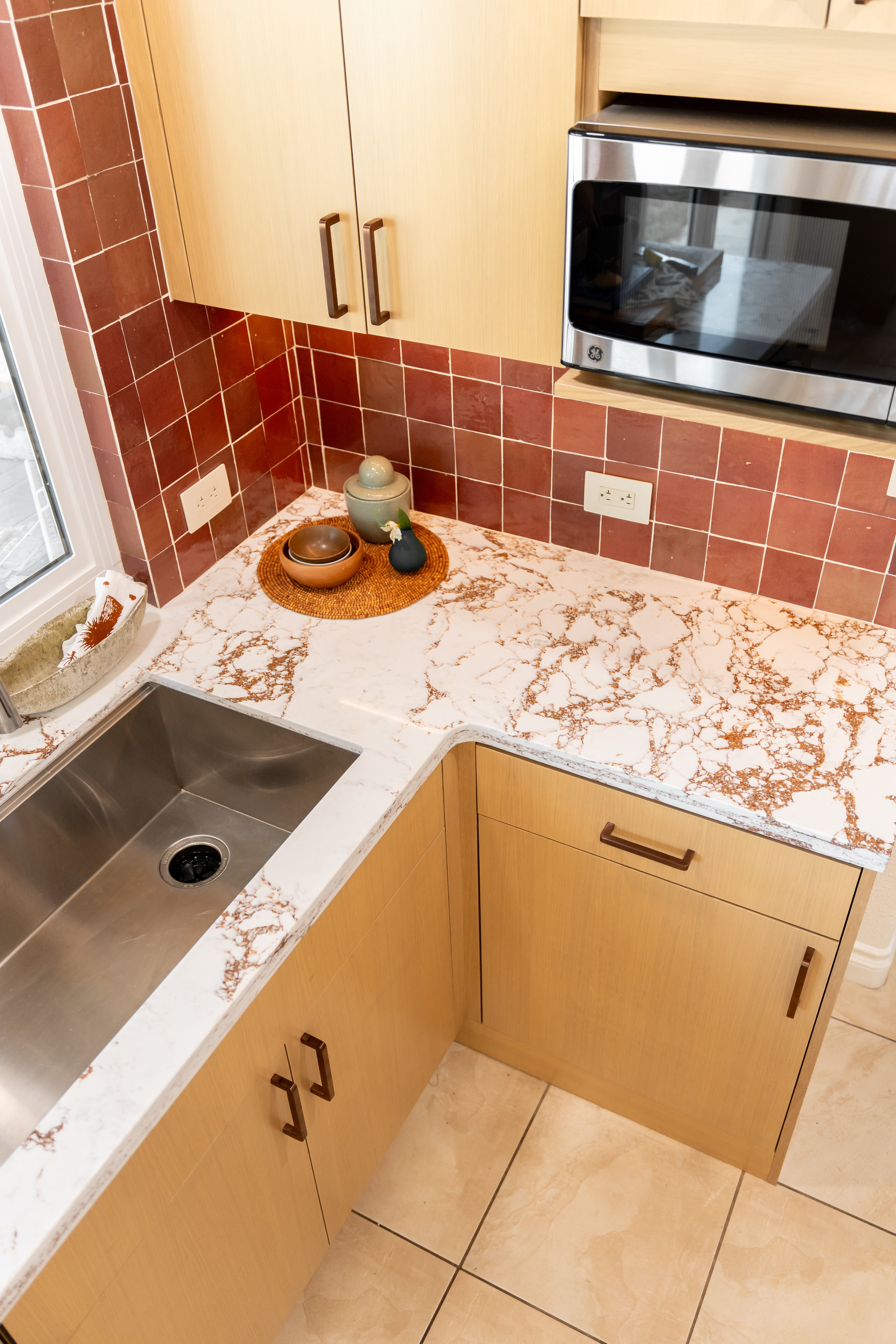
Gilbert chose a quartz countertop for the kitchen. “I love the stone, I love how easy it is to clean, and I love the color gradient within it,” she says.
Along those lines, Gilbert enjoys her backsplash of Zellige tiles. These thick handmade tiles required a delicate touch to install, and the end result is textured and bold, with different color gradients on each tile.
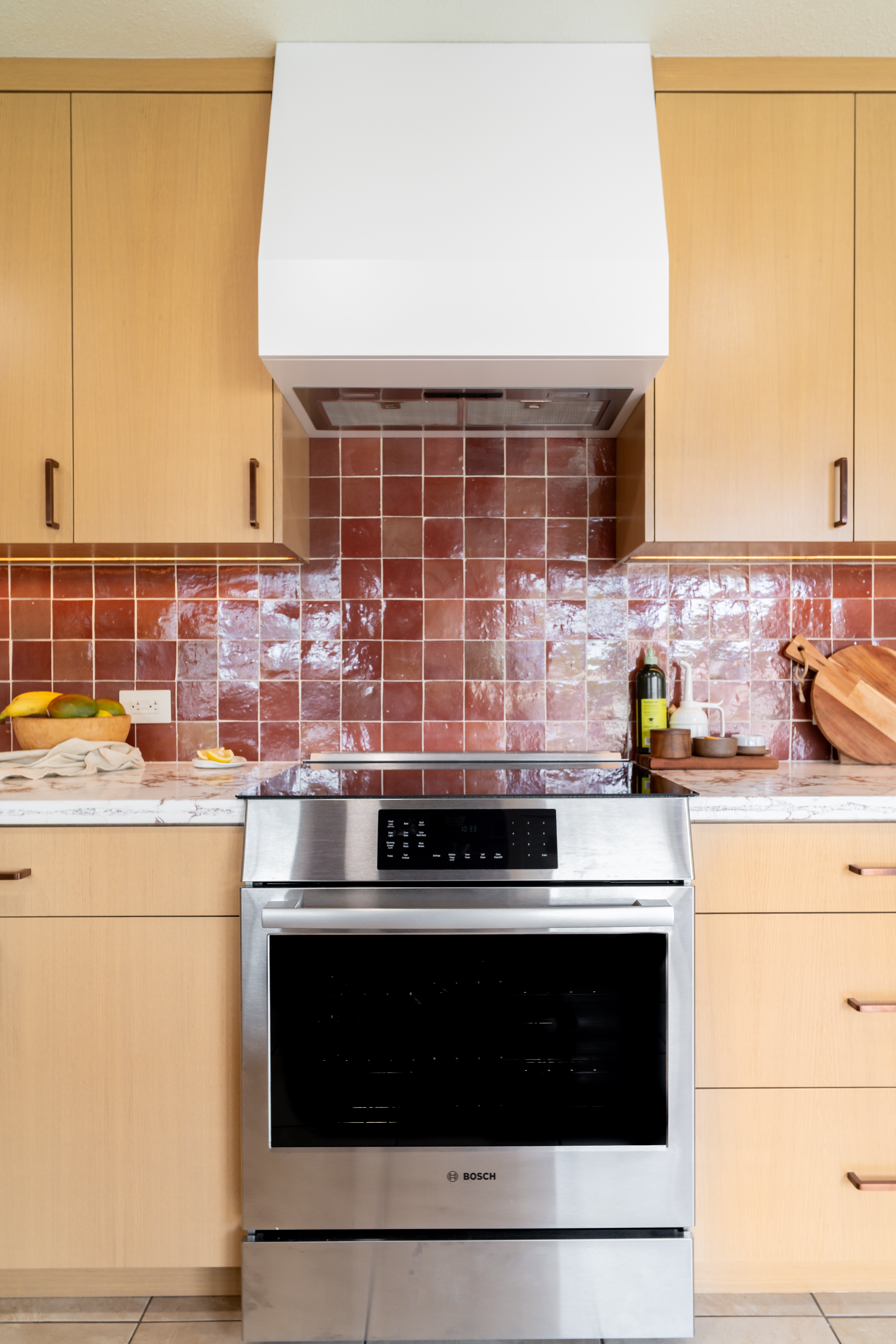
According to Gilbert, converting from gas to electric was the right choice for her family. “Our new induction stove is great. It’s crazy how fast it is to cook things on,” she says. As a bonus, cleaning is much easier—something that was top-of-mind during the remodel process.
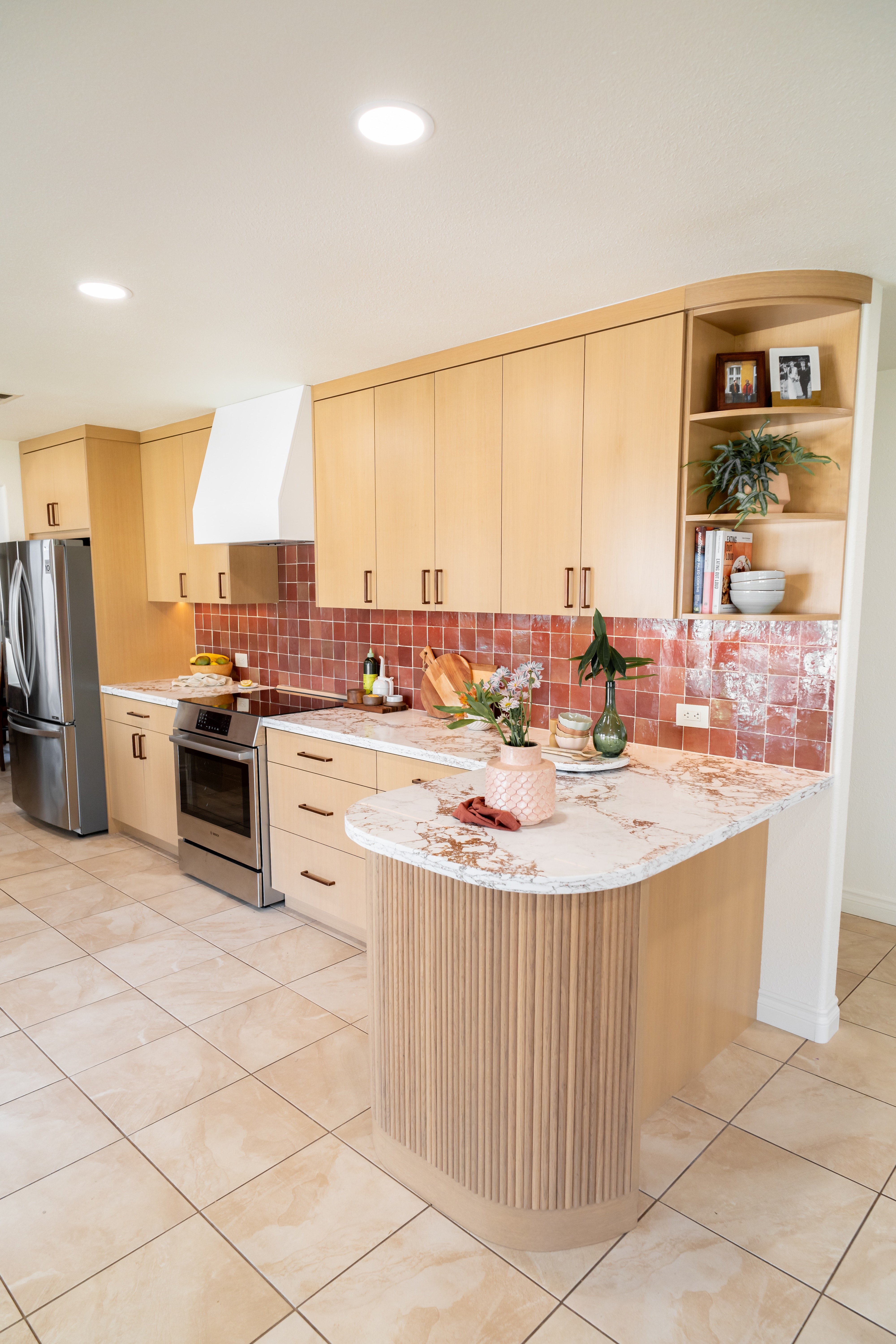
When Vesta Builders proposed an L-shaped peninsula in her kitchen, Gilbert initially didn’t think she had the space for it—but it ended up being one of her favorite parts of the new kitchen. “It's nice extra counter space,” she says. “Even though it takes up room in our kitchen, it oddly makes the kitchen feel more spacious because it's usable space.”
What’s more, Gilbert can store bulky items in the cabinets underneath the peninsula, instead of “strewing them about the house” like before.
Barak was also happy with the peninsula, calling it both beautiful and functional. The textured edge of the peninsula gives it a different look from the rest of the cabinets, he says. “You also have a space to sit, which is really nice”—and it’s perfect for hosting.
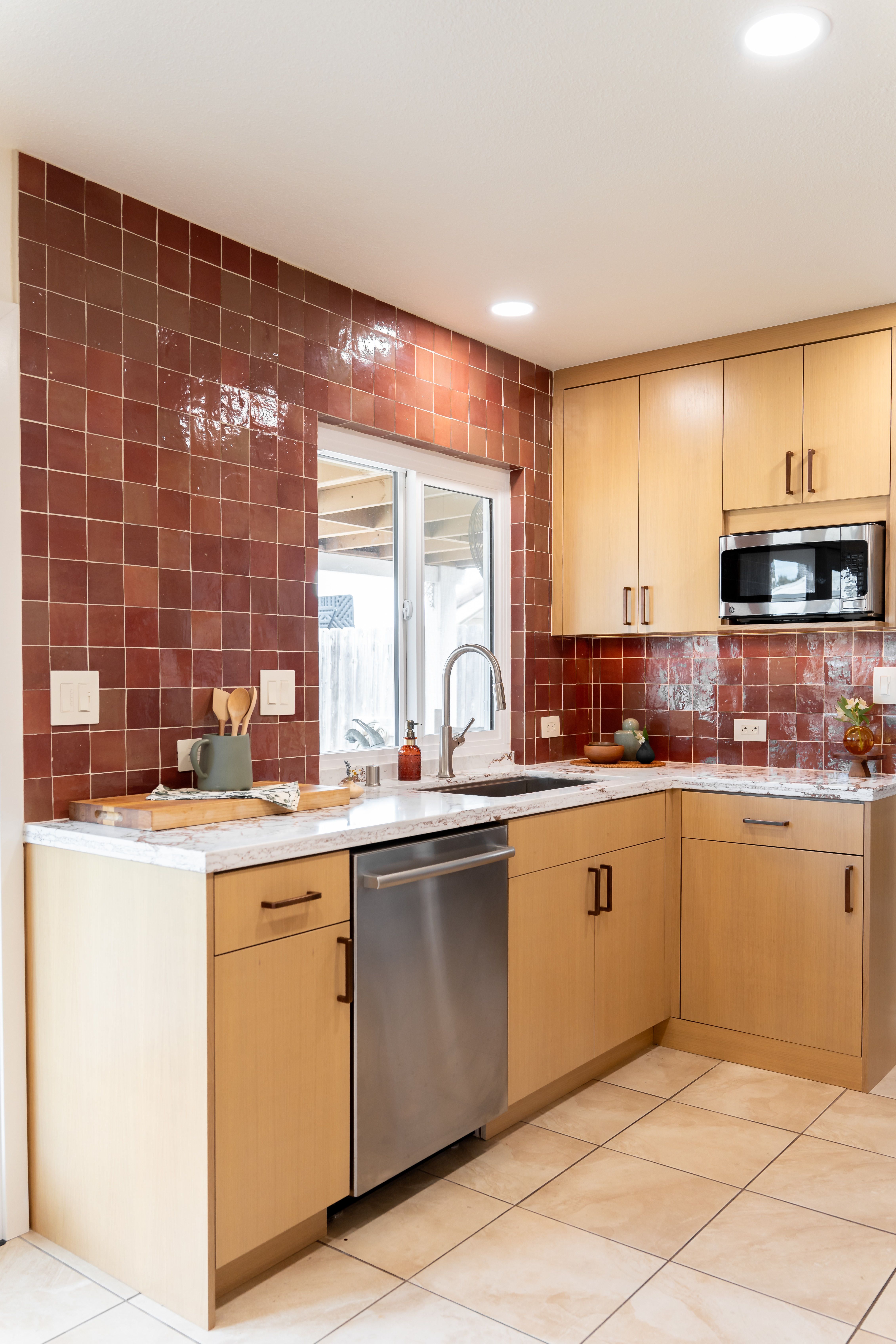
If you’re looking to remodel your own kitchen, Gilbert and Baral have some advice.
Talk to at least three kitchen remodeling pros near you. “It’s really interesting to see the different perspectives,” says Gilbert. “This was my first remodel but a pro’s 10th or 20th or 50th, so they could come with a lot of legacy knowledge.”
According to Barak, “the best thing that homeowners can do is prepare as much as possible, and write out their needs, wants, and what they want to accomplish.” The homeowner is the one who lives in the space, he says, and preparation helps contractors understand their vision and challenges better.
Gilbert is happy with the Zellige tile in her backsplash, but the handmade material boosted her labor costs, and it has a higher risk of chipping. She wishes she knew those details before falling in love with the material, and she advises other homeowners to do their own research.
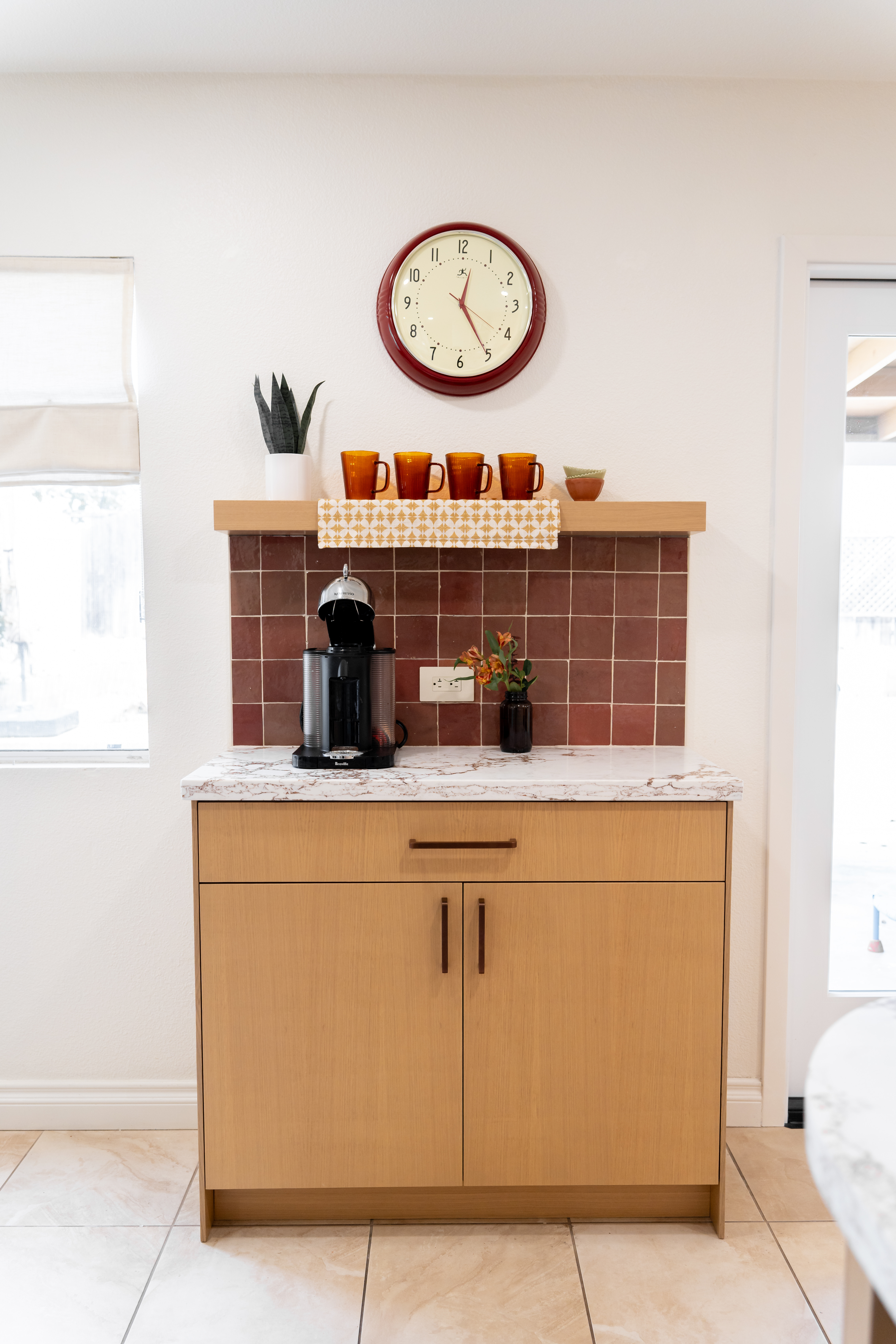
“If you can afford to budget in time—like if you're not in a big rush to get a remodel done—definitely do it,” says Gilbert. The seven years she spent in her house before the remodel, as well as the months-long planning process, gave her time to envision exactly how she wanted the space to look.
Barak suggests listening to ideas from your contractor. That’s because homeowners don’t always understand the risks and implications of doing certain things. You don’t want to end up with something that’s dangerous, prone to problems, or otherwise not recommended. “Tell the contractors what you want, but also be open to hear suggestions,” he says.
From average costs to expert advice, get all the answers you need to get your job done.

Remodeling your bathroom can add significant value to your home. Your bathroom remodel cost in Columbus, OH will depend on size, fixtures, materials, labor, and other factors.

From budget-friendly builds to advanced plans fit for a gourmet chef, the price to build a kitchen can vary. Learn the average kitchen installation cost.

Building a guest house is one of the largest home projects and involves several different professionals. Learn about the cost to build a guest house and where you can save.

Undermounted sinks are elegant upgrades to any kitchen and can add to your home’s resale value. But are they the best option? Here we’ll learn the pros and cons of having an undermount sink.
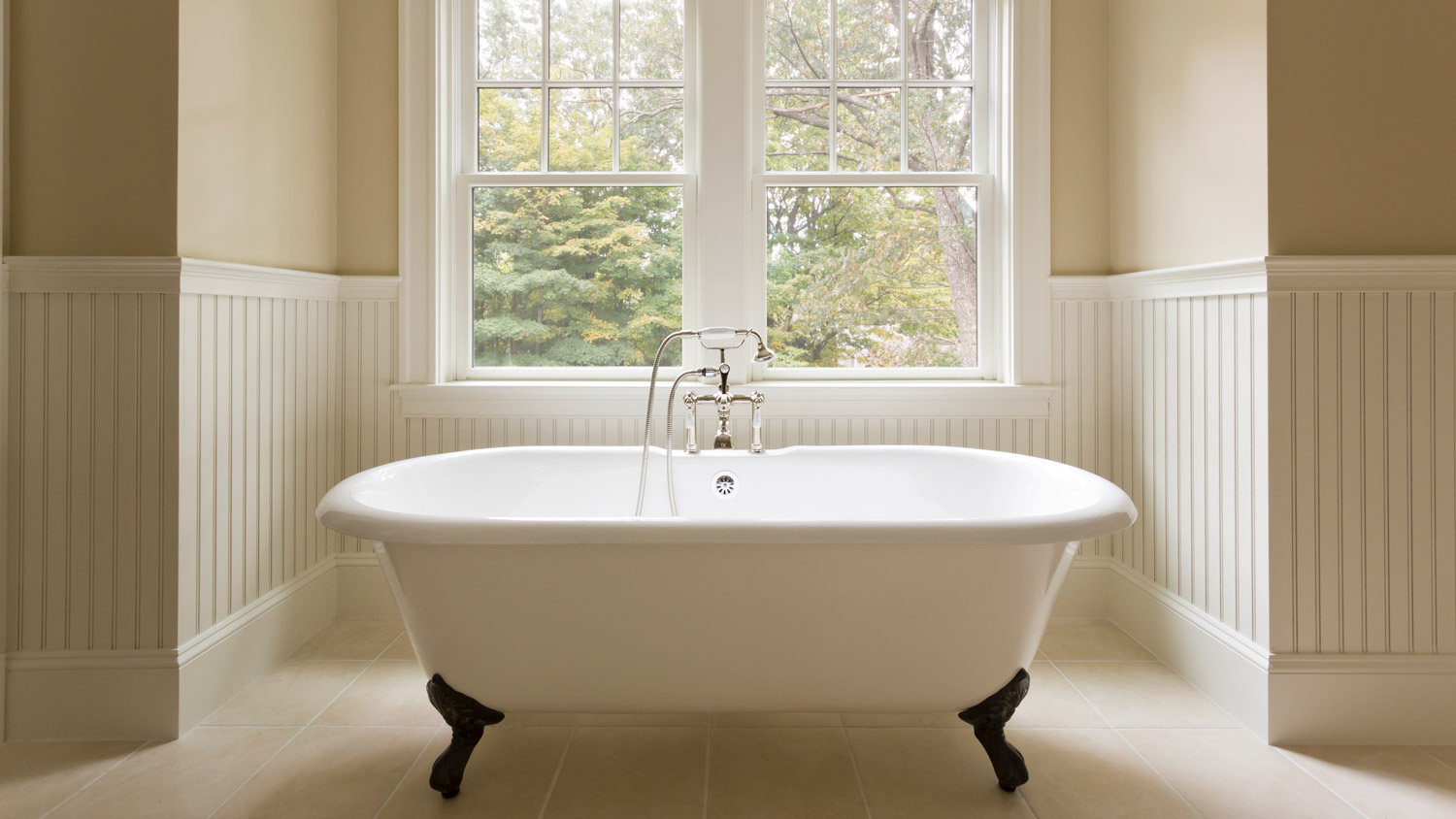
An updated bathtub can give a bathroom a whole new look. Find out how much it costs to replace a bathtub in San Francisco, CA, including prices by type and labor costs.
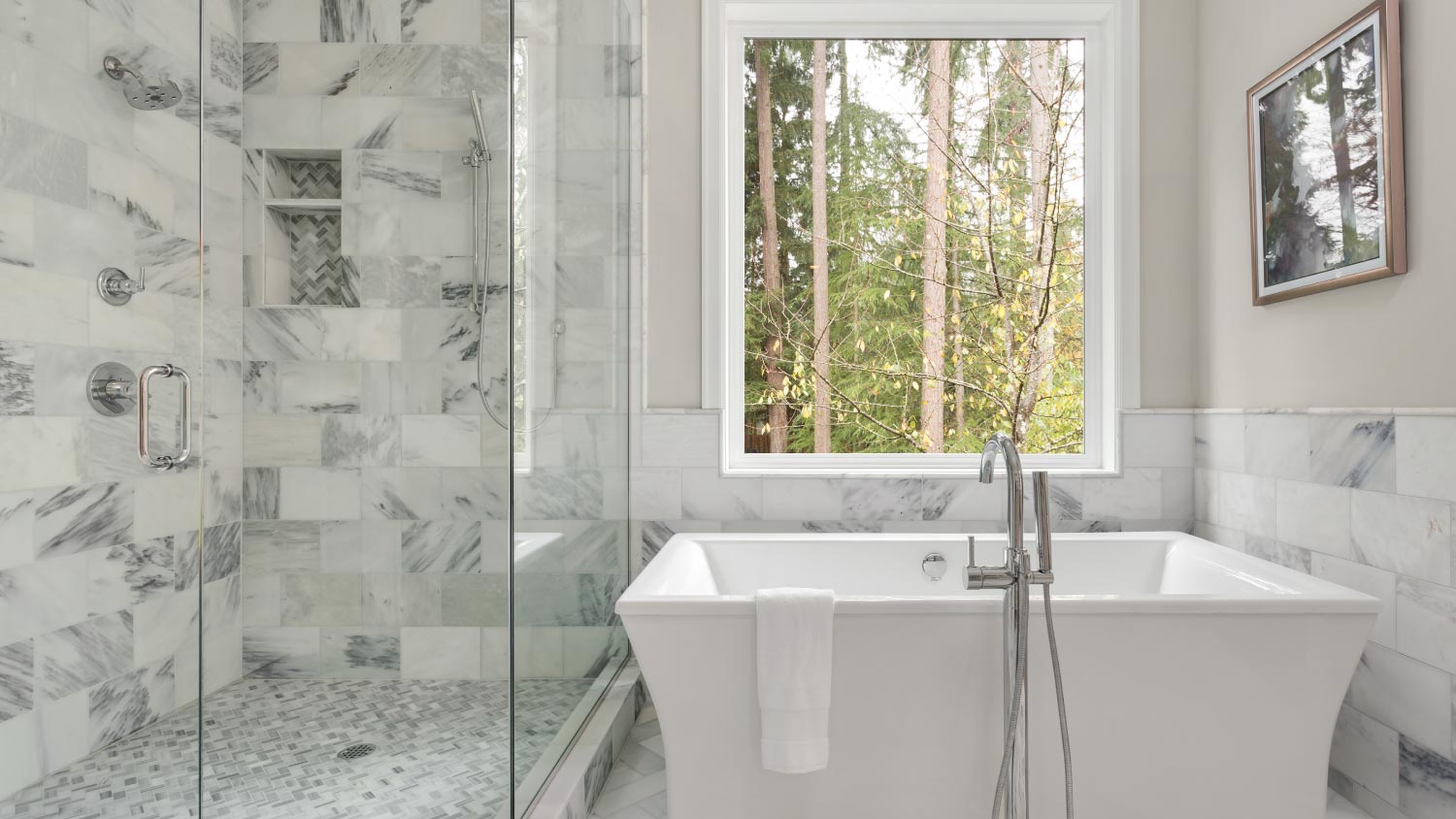
An updated bathtub can give a bathroom a whole new look. Find out how much it costs to replace a bathtub in Atlanta, GA, including prices by type and labor costs.